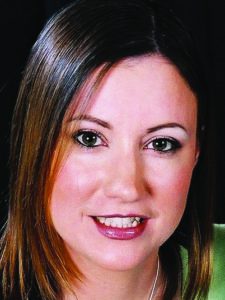Editor’s note: Jackie Spinner is the keynote speaker for the National Newspaper Association Convention on Oct. 3-5 in Milwaukee. Sign up for the NNA Convention today!
Like a lot of media consumers, I appreciate a good news roundup to focus my attention. I subscribe to a manageable four or five daily newsletters, and each morning, I head to my email inbox to see what The Washington Post, Chicago Tribune and Politico have for me.
Although I get news from social media, too, it can be a rabbit hole. And when I’m in a hurry or on deadline, I know better than to check Facebook or Twitter — both of which are essential news sources and reporting tools for me, but also can be a major distraction.
In the past decade, media organizations have embraced email newsletters for just that reason. It’s a way to quickly capture the attention of scattered readers and also to lure subscribers to their paid products. As freelance writer Richard Bertin noted in a 2017 article on Medium, newsletters help consumers become “more purposeful with how we retrieve and read the news.”

A 2016 Quartz survey of global executives found the majority (94%) got their news from email newsletters. Media organizations have certainly taken note. The New York Times in July 2018 had 55 newsletters with more than 14 million subscribers.
That’s what makes the story of the Waterloo Republic-Times in southwestern Illinois even more remarkable.
The paper launched its email “News Flash” in 2012, just as many of the large legacy news organizations were starting theirs. In the beginning, the paper sent a simple text email to a few hundred email addresses with breaking news important to a small community, such as a boil order or a blocked road.
- RELATED: Read more from our columnists
The paper then formalized the “News Flash” with a template from Mailchimp (and now Emma), both email marketing tools.
“That just started taking off,” said Corey Saathoff, Republic-Times editor.
The weekly newsletter, which also comes out on Saturdays during the high school sports season, has since grown to a bulletin with multiple stories and paid advertisements. It gets sent to more than 5,000 subscribers, an impressive number for a small-town newspaper in a town of about 10,000. Newspaper circulation has stayed about the same, and Saathoff is OK with that.
“It’s good just to be steady these days,” he said.
The “News Flash” generates revenue for the paper with opt-in ads for print advertisers costing $40. The paper started selling the newsletter ads once it reached 1,500 subscribers, Saathoff said. It averages 10 to 12 ads per issue. The newsletter itself is free to subscribers.
“It’s been very great for us,” He said. “People look forward to it. We entice. That’s our goal, (to get people) to go to our website and/or pick up the paper and subscriber.”
Saathoff said the trick is not to give all of its content away for free.
“You have to be smart about how you present the news in digital formats and in print forms,” he said. “You want to reign it in a little bit.”
A recent “News Flash” featured a picture of a trio of three-horned owls from a reader’s backyard, an item about a conservation day at a local club, and news about a recovered stolen vehicle. Some of the items were standalone, and others had the more complete article on the paper’s website. Often, the website guides readers to the full story in the paid print edition.
Like a lot of community newspapers, the Republic-Times‘ print readership is aging. Younger readers connect with the paper through social media and the email newsletter. That might be the most important purpose behind the “News Flash.”
“The entire time by boys lived at home, it was rare to see them pick up our weekly edition,” said Kermit Constantine, general manager of the Republic-Times. “Now that they have moved away, when we get together, it is fun to hear them talk about local topics that we reported.
Jackie Spinner is editor of Gateway Journalism Review and an associate professor at Columbia College Chicago. Send story tips to jspinner@colum.edu



